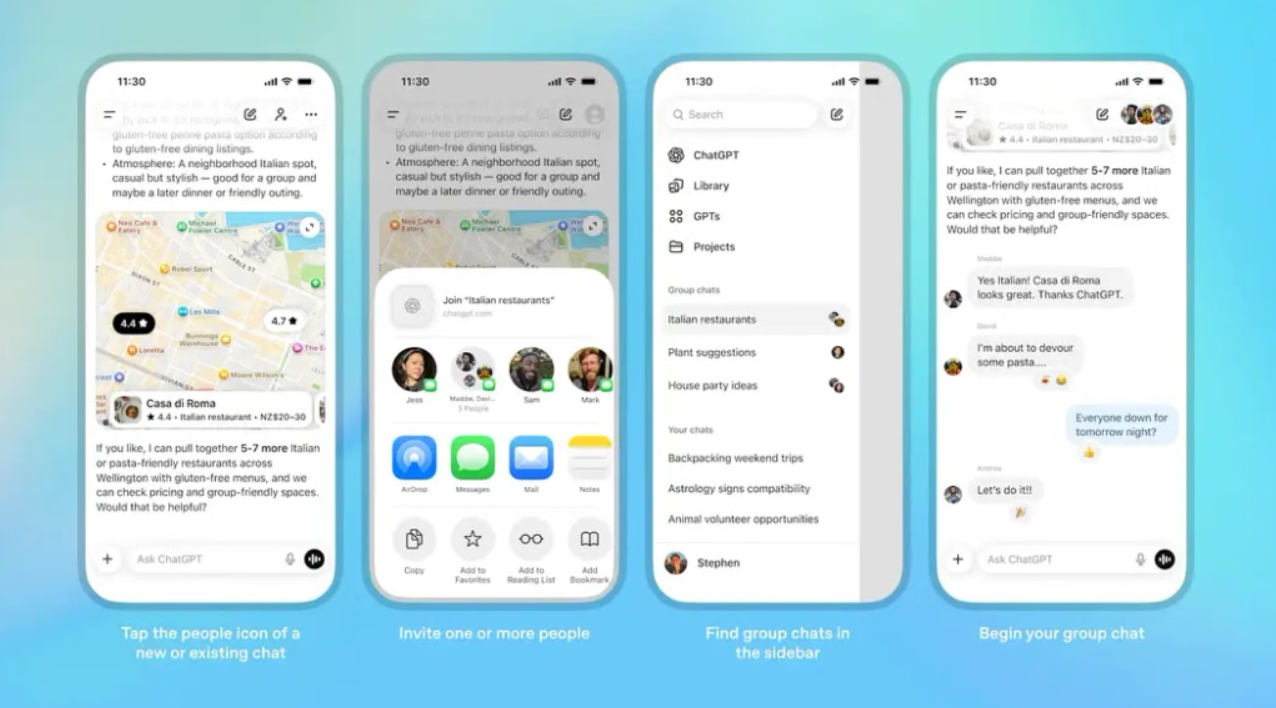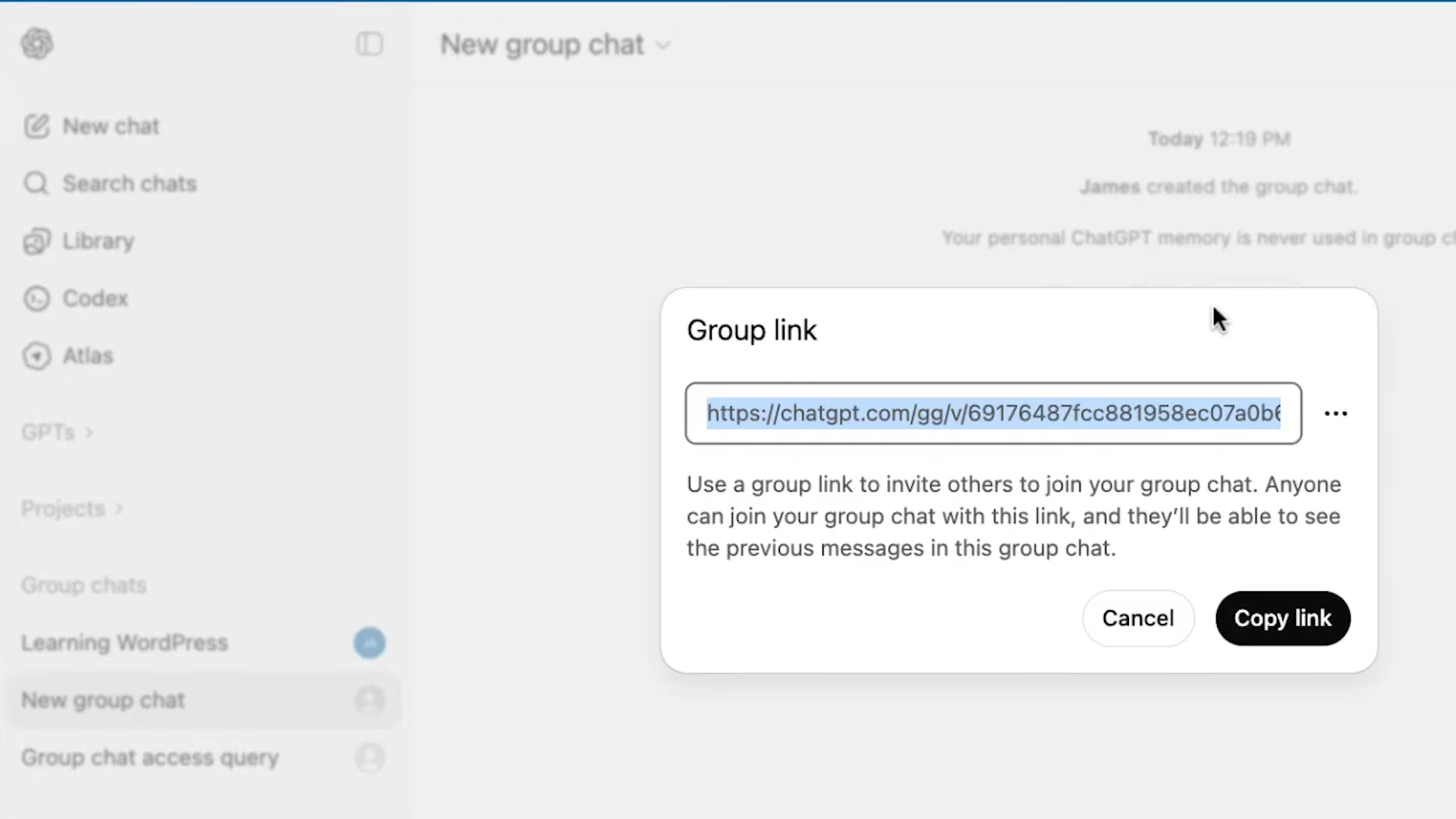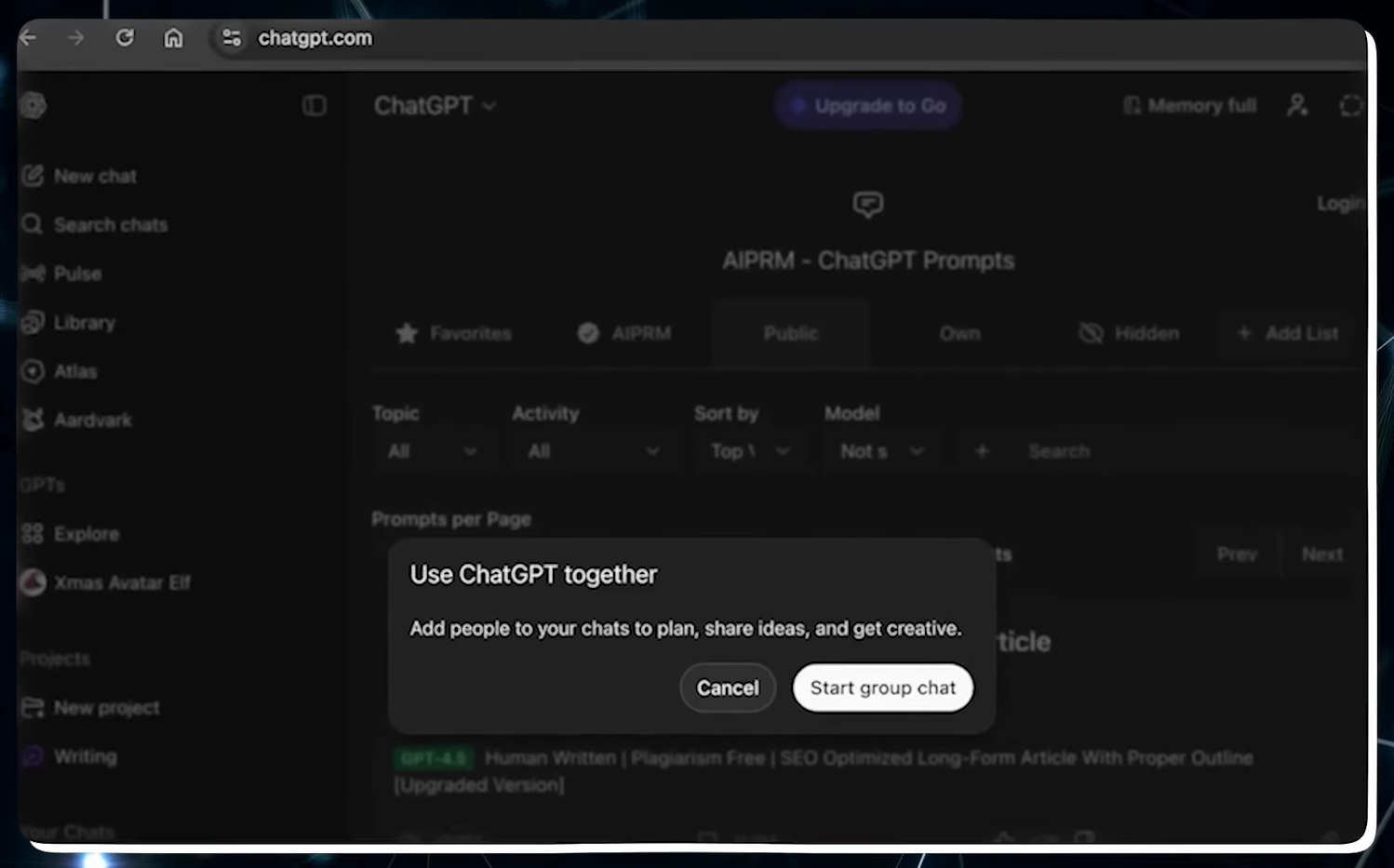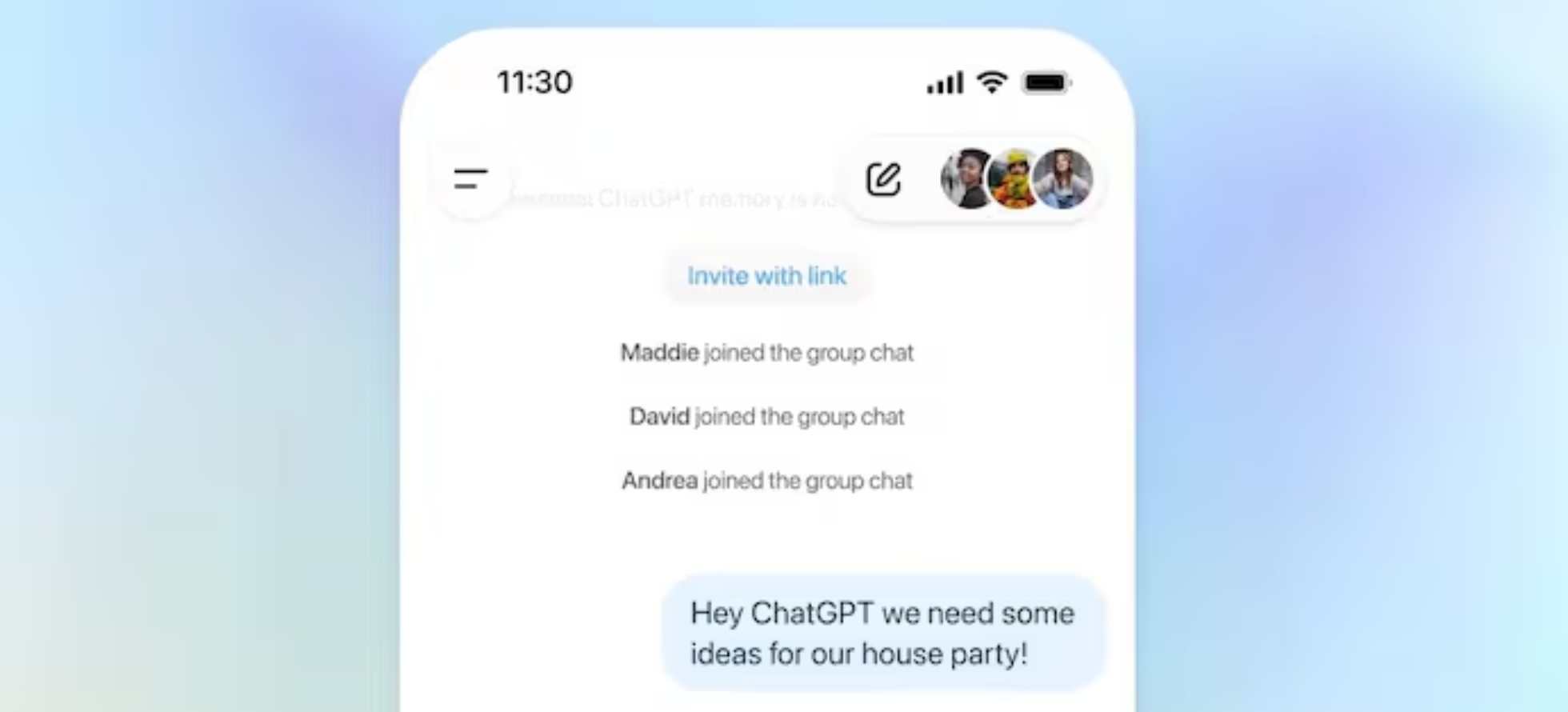OpenAI is pushing ChatGPT into uncharted territory with the rollout of group chat functionality, signaling the company’s intention to evolve beyond a simple AI assistant into a full-fledged collaborative platform where human conversation and artificial intelligence merge seamlessly.
After a successful pilot program in select regions, OpenAI announced on November 20, 2025, that group chats would expand to all logged-in users globally across Free, Go, Plus, and Pro subscription tiers.
The feature initially launched in Japan, New Zealand, South Korea, and Taiwan, where early user feedback proved encouraging enough to justify a worldwide release.
The concept is straightforward yet transformative: users can now invite up to twenty people into shared ChatGPT conversations for collaborative planning, decision-making, and creative brainstorming. Whether coordinating a weekend getaway, designing a backyard garden with family members, or drafting project outlines with colleagues, participants can work together while ChatGPT observes and assists when needed.

What sets this apart from typical group messaging is ChatGPT’s carefully calibrated social awareness. The AI has been programmed with contextual understanding that allows it to determine when its input would be valuable and when to remain silent. Users can always summon the assistant by mentioning “ChatGPT” directly, but the system won’t intrude on human-to-human exchanges unless invited. The AI can even react to messages with emoji and reference profile photos to create personalized images for group members.
Starting a group chat requires tapping an icon in the upper corner of any conversation, which generates a shareable link. Participants set up brief profiles with names, usernames, and photos so everyone knows who’s present.

The technical backbone relies on GPT-5.1 Auto, which intelligently selects the optimal model based on each prompt and the subscription level of the person receiving ChatGPT’s response.
The platform supports familiar modern messaging features including search, image and file uploads, image generation, and voice dictation. Importantly, rate limits only apply when ChatGPT responds to queries, not to messages exchanged between human participants, ensuring fluid conversation flow.
OpenAI has implemented deliberate privacy protections to address concerns about mixing personal and shared interactions. Group chats remain completely separate from individual conversations, and ChatGPT’s personal memory feature—which normally helps the AI remember user preferences and context—doesn’t transfer into collaborative spaces. The system won’t create new memories from group discussions, though the company indicated it may offer more granular controls in the future.
User autonomy remains central to the design philosophy. Joining requires accepting an invitation, and participants can view the complete member list or exit at any time. Most group members can remove others, though the conversation creator can only be removed by choosing to leave.
For users under eighteen, ChatGPT automatically restricts sensitive content for everyone in the chat, and parents or guardians can disable the feature entirely through parental controls.
The workplace and educational applications appear particularly promising. Teams can share articles, research notes, and questions while ChatGPT helps summarize and organize information. Students can collaborate on assignments with AI assistance available for clarification and guidance. Even mundane tasks like finding restaurants that accommodate everyone’s dietary preferences or settling friendly debates gain efficiency with an impartial digital participant.

OpenAI describes this launch as merely the beginning of a broader vision. The company envisions ChatGPT becoming a shared environment where collaboration and social interaction happen naturally alongside AI assistance. As users provide feedback during the expanded rollout, OpenAI plans to refine the experience and explore additional features that support group dynamics.
Rather than positioning ChatGPT solely as a productivity tool individuals use in isolation, OpenAI is betting that the future involves AI as a participant in collective human activity—present when helpful, invisible when unnecessary, and always designed to enhance rather than replace human connection and creativity.



